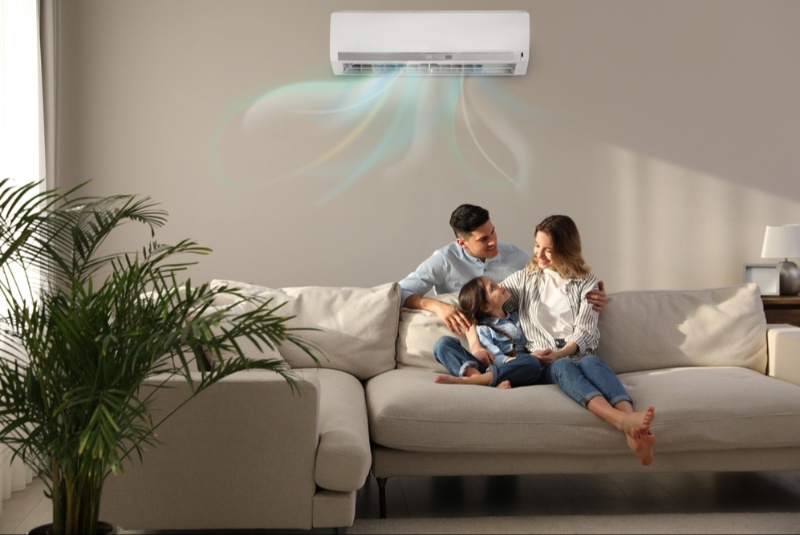The refrigerator is one of the most essential appliances in any modern kitchen. It keeps our food fresh, our drinks cold, and our ice cream frozen. But with the multitude of options available in the market today, purchasing the perfect refrigerator can be a daunting task. This article aims to guide you through the process of mastering the art of purchasing a high-quality refrigerator that suits your needs and preferences. From understanding different types and sizes to considering energy efficiency and special features, we will cover all the important aspects to ensure that your new refrigerator not only keeps your food fresh but also enhances your kitchen and lifestyle.
Understanding Refrigerator Types
Before diving into the world of high-quality refrigerators, it's crucial to understand the different types available. Each type offers specific advantages and caters to different needs. Here are the most common types:
- Top-Freezer Refrigerators: These are the classic refrigerator models with the freezer compartment located at the top. They are generally the most affordable option and provide a good balance between refrigerator and freezer space. Top-freezer refrigerators are ideal for smaller kitchens.
- Bottom-Freezer Refrigerators: In these models, the freezer is located at the bottom, making it easier to access your fresh food items. The refrigerator compartment is typically at eye level, offering convenience and organization.
- Side-by-Side Refrigerators: These refrigerators have two vertically divided compartments, with the freezer on one side and the refrigerator on the other. They provide equal space for both fresh and frozen items, making them a suitable choice for families.
- French Door Refrigerators: French door refrigerators combine the benefits of side-by-side and bottom-freezer models. They feature two narrow side-by-side doors for the refrigerator compartment and a pull-out drawer for the freezer below. French door refrigerators are known for their spacious interior and flexibility.
- Counter-Depth Refrigerators: These refrigerators are designed to align with your kitchen cabinets, providing a built-in appearance without the need for custom cabinetry. They offer a sleek and integrated look, but their storage capacity can be slightly reduced compared to standard-depth models.
Choosing the Right Size
Selecting the right size refrigerator is crucial to ensure it fits your kitchen space and meets your storage needs. To determine the appropriate size, consider the following factors:
- Available Space: Measure the space in your kitchen where you intend to place the refrigerator. Pay attention to width, height, and depth restrictions. It's essential to leave some clearance around the refrigerator for ventilation and door swing.
- Family Size: The number of people in your household will influence the size of the refrigerator you need. Larger families will require more storage space for fresh and frozen food.
- Cooking Habits: If you cook frequently and prepare fresh meals, you may require a larger refrigerator to store ingredients. On the other hand, if you often dine out or buy pre-packaged meals, a smaller refrigerator may suffice.
- Entertaining Needs: Consider how often you host gatherings or parties. If you frequently entertain guests, you may want a refrigerator with ample space for drinks and appetizers.
Energy Efficiency Matters
With environmental concerns and rising energy costs, it's essential to prioritize energy efficiency when purchasing a refrigerator. Look for the ENERGY STAR label, which indicates that the appliance meets strict energy efficiency guidelines set by the U.S. Environmental Protection Agency (EPA). Energy-efficient refrigerators can significantly reduce your electricity bills and minimize your carbon footprint.
Additionally, pay attention to the refrigerator's Energy Guide label, which provides estimated annual energy consumption and operating costs. Compare this information among different models to make an informed decision. Generally, refrigerators with top-tier energy efficiency ratings will have better insulation, advanced compressors, and smart features to optimize energy usage.

Special Features and Innovations
Modern refrigerators come with a plethora of special features and innovations that can enhance your kitchen experience. While these extras can add to the overall cost, they can also provide significant convenience and functionality. Here are some popular features to consider:
- Water and Ice Dispensers: Many refrigerators offer built-in water and ice dispensers, providing easy access to chilled water, ice cubes, and crushed ice. Some models even have advanced filtration systems for cleaner water.
- Smart Technology: Smart refrigerators are equipped with Wi-Fi connectivity and touchscreen interfaces. They allow you to control temperature settings, receive alerts, and even create shopping lists from your smartphone. Some models can also connect to voice assistants like Amazon Alexa or Google Assistant.
- Adjustable Shelves and Drawers: Flexible shelving and drawers make it easier to customize the interior to accommodate items of different sizes. Look for models with sliding and folding shelves and adjustable door bins.
- Temperature-Controlled Zones: Certain refrigerators have specific zones for different types of food, such as a deli drawer with adjustable humidity levels or a dedicated section for storing meats at a lower temperature.
- Door-in-Door Design: Some refrigerators feature a "door-in-door" design that allows you to access frequently used items without fully opening the main refrigerator door. This can help conserve energy and maintain temperature stability.
- Dual Cooling Systems: High-end refrigerators often come with dual cooling systems that independently control the temperature in the refrigerator and freezer compartments. This ensures that the conditions are optimal for each type of food.
- Quiet Operation: If your kitchen is an open space or near living areas, consider a refrigerator with quiet or ultra-quiet operation to minimize noise disruptions.
Reliability and Brand Reputation
Reliability is a crucial factor when investing in a high-quality refrigerator. It's essential to choose a reputable brand known for producing reliable appliances. Research customer reviews and ratings to get a sense of the brand's reputation and the specific model's performance.
Additionally, consider the manufacturer's warranty. A longer warranty period can provide peace of mind, as it demonstrates the manufacturer's confidence in the product's durability. Be sure to read and understand the warranty terms and coverage, including any exclusions or limitations.
Budget Considerations
Setting a budget is an important step in the refrigerator-buying process. Refrigerator prices can vary significantly based on brand, size, features, and style. While it's tempting to go for the most advanced model with all the bells and whistles, it's essential to find a balance between your needs and your budget.
Take the time to compare prices across different retailers and online platforms. Look for seasonal promotions, sales events, and discounts that can help you save on your purchase. Keep in mind that investing in a high-quality refrigerator is a long-term investment that can pay off in energy savings and durability over time.
Maintenance and Cleaning
To ensure your high-quality refrigerator continues to function optimally, regular maintenance and cleaning are essential. Here are some tips to keep your refrigerator in top condition:
- Clean Condenser Coils: Dust and debris can accumulate on the condenser coils, reducing the refrigerator's efficiency. Vacuum or brush the coils at least twice a year to keep them clean.
- Check Door Seals: Inspect the door gaskets for any signs of wear or damage. Properly sealing doors are crucial for maintaining the internal temperature. If you notice leaks or gaps, replace the gaskets.
- Temperature Monitoring: Use a refrigerator thermometer to check and adjust the temperature settings as needed. The refrigerator should be kept at around 37°F (3°C), and the freezer at 0°F (-18°C).
- Regularly Defrost Freezer: If you have a manual defrost freezer, make sure to defrost it regularly to prevent ice buildup, which can reduce efficiency.
- Clean and Organize Interior: Regularly remove expired items and clean spills to maintain a hygienic and organized interior. Consider using storage bins and containers to maximize space and reduce clutter.
Mastering the art of purchasing a high-quality refrigerator requires careful consideration of your specific needs, preferences, and budget. By understanding the different types of refrigerators, selecting the right size, prioritizing energy efficiency, exploring special features, and considering brand reputation, you can make an informed decision that enhances your kitchen and improves your lifestyle. Remember that a high-quality refrigerator is not just a kitchen appliance but an investment in the freshness and convenience of your daily life. Choose wisely, and your refrigerator will serve you well for years to come.




